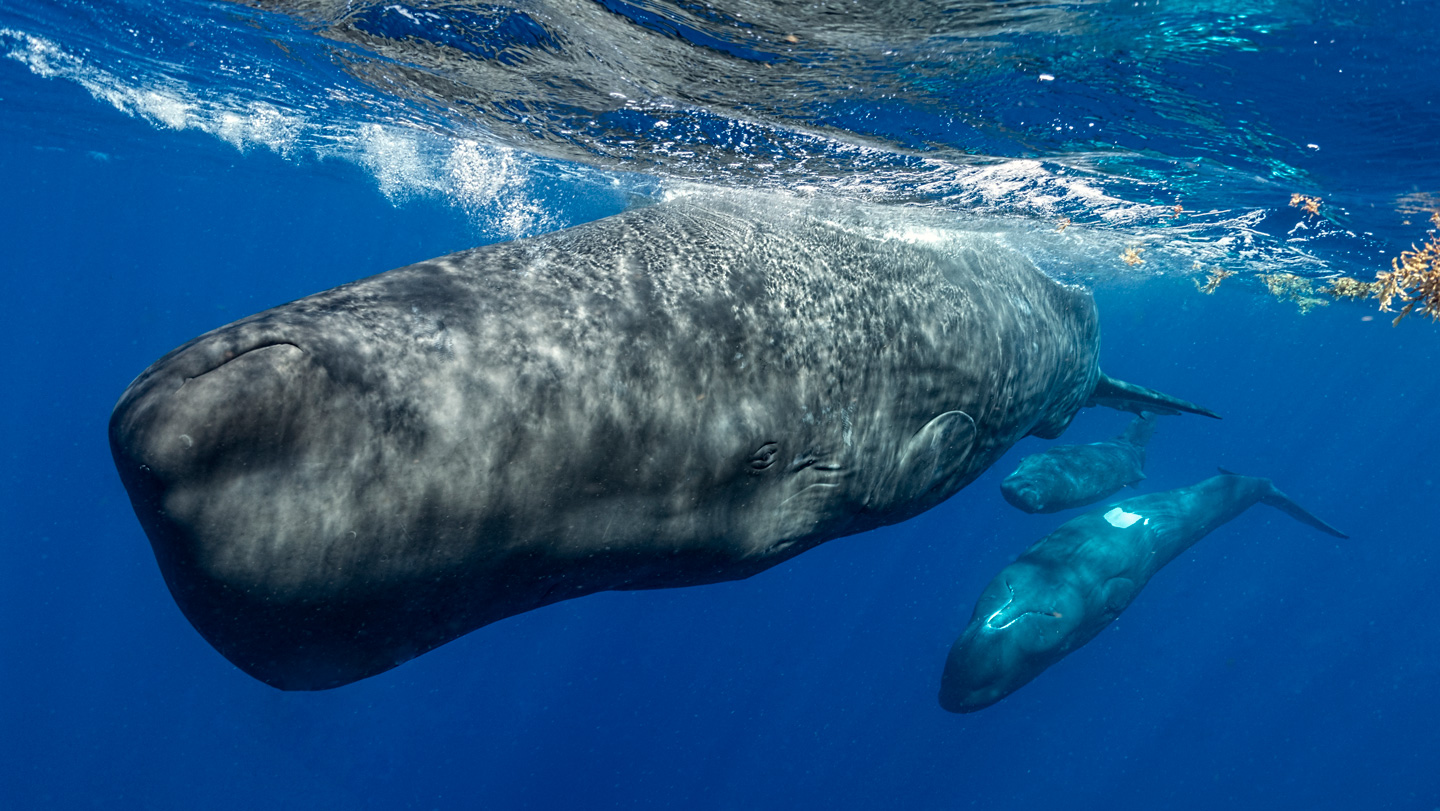
Dolphins whistle, humpback whales sing and sperm whales click. Now, a new analysis of sperm whale codas — a unique series of clicks — suggests a previously unrecognized acoustic pattern. The finding, reported November 12 in Open Mind, implies that the whales’ clicking communications might be more complex — and meaningful — than previously realized.
But the study faces sharp criticism from marine biologists who argue that these patterns are more likely to be recording artifacts or by-products of alertness rather than language-like signals.
For decades, biologists have known that both the number and timing of clicks in a coda matter and can even identify the clan of a sperm whale (Physeter macrocephalus). Sperm whales in the eastern Caribbean Sea off the coast of Dominica, for example, often use a series of two slow and three quick sounds: “click…click… click-click-click.”
Relying on artificial intelligence and linguistics analysis, the new study finds that sometimes this series sounds more like “clack…clack… clack-clack-clack,” says Shane Gero, a marine biologist at Project CETI, a Dominica-based nonprofit studying sperm whale communication.
Project CETI linguist Gašper Beguš wonders about the meanings a coda might convey. “It sounds really alien,” almost like Morse code, says Beguš, of the University of California, Berkeley. Based on his team’s result, he now speculates that sperm whales might use clicks or clacks “in a similar way as we use our vowels to transmit meaning.”
Not everyone agrees with that assessment.
The comparison to vowels is “completely nonsense,” says Luke Rendell, a marine biologist at the University of St. Andrews in Scotland who has studied sperm whales for more than 30 years. “There’s no evidence that the animals are responding in any way to this [new pattern].”
He notes that each sperm whale click isn’t just one tone but several in a row, and this can introduce ripples into a recording that aren’t present in the original. These ripples can look a lot like the pattern the CETI team found. He thinks the researchers didn’t do enough to rule out the possibility of recording artifacts.
“I was always worried that this is some sort of artifact,” Beguš says. “But we were very careful.” The team found the same pattern in codas recorded by other labs with different equipment, but that work hasn’t been published yet.
Marine biologist Denise Herzing, who has studied dolphin communication for over 40 years, also objects to the word “vowel.” People who read that might jump to the conclusion that the animals are using “something like human language,” says Herzing, of Florida Atlantic University in Boca Raton. Unfounded claims about dolphin abilities in the 1960s and ’70s, she says, killed communication research in her field for a long time.
Still, the new pattern is “well worth exploring,” Herzing says. This study takes “a novel look at sperm whale communication using a technique that hasn’t been used before.”
The CETI team initially used an AI system called a generative adversarial network, or GAN, to look for aspects of sperm whale codas that might carry meaning. Half of this system learned to recognize real sperm whale codas from data. The other half learned to create its own invented codas that could carry information. And it tried to trick the first half into thinking these were real. In the invented codas, manipulating frequency proved to be important.
So Beguš decided to study the frequencies of real codas. To help with this, he removed the spaces between clicks in real whale recordings so they all ran together. This made it possible for human ears to hear differences between the “click” and “clack” types of codas. He studied these sounds using tools that linguists use to study human words.
Herzing says the idea to remove spaces is interesting: “It’s a way for humans to sort of listen differently.” But it’s unknown, she says, whether the technique reveals how whales experience these sounds.
Stephanie King, a marine biologist at the University of Bristol in England, is also skeptical. She’s not convinced that the pattern CETI found is something the whales notice or produce on purpose. It “might be more likely related to arousal,” she says, as similar patterns across the animal kingdom are often related to how alert or relaxed an animal is.
Project CETI’s Gero agrees that the new pattern might “encode for emotional state.” But he thinks it’s worth exploring other possibilities. His team is currently gathering data on the whales’ locations and activities when they make these and other types of codas.








